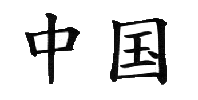China Beat Archive

China Beat Blog: Archive 2008-2012
Date of this Version
12-15-2010
Document Type
Article
Citation
December 15, 2010 in The China Beat http://www.thechinabeat.org/
Abstract
In 1961, Julia Child published Mastering the Art of French Cooking, among the most celebrated cookbooks of the 20th century. Designed to demystify the intricacies of French cuisine and convince the “servantless American cook” that she could conquer any of the recipes contained therein, Child’s book helped to bring French food out of upscale city restaurants and into the kitchens of families across the country.
Sixteen years earlier, Buwei Yang Chao had taken on a similar task, though she met with much less widespread success than Child would. Chao’s How to Cook and Eat in Chinese (1945) did not only show American readers that they could produce Chinese food in their own homes, but also demonstrated that Chinese cuisine was far more diverse and pleasurable than the fare at the innumerable chop suey joints dotting the United States would have led cooks to believe. “[In] the course of time,” Chao explains, “a tradition of American-Chinese food and ceremonies of eating has grown up which is different from eating in China” (quoted in Coe 219). Child taught her readers how to cook an already familiar cuisine; Chao schooled hers on the very question of what Chinese food actually was.
France and China might be equally proud of their vaunted culinary traditions, but for almost two centuries they were received by American diners in completely opposite ways. While serving guests French food was often meant to show off one’s sophistication and good taste, heading to a Chinese restaurant long indicated a desire to partake of a cheap, filling meal seasoned with a dash of exotic worldliness. The fact that few in China would have recognized the “Chinese” food being served in the U.S. was beside the point.
Andrew Coe narrates the history of this American love-hate attitude toward Chinese food in Chop Suey: A Cultural History of Chinese Food in the United States(Oxford University Press, 2009). Coe begins his story in Guangzhou, as traders from the newly born United States established commerce with China in 1784, a profitable relationship that would flourish in the decades to come. Though early American businessmen were more than eager to trade with the Chinese, they hesitated about joining their partners at the dining table; foreign accounts of Chinese banquets from the 18th and 19th centuries abound with descriptions, tinged with both fascination and horror, of the seemingly unlimited range of plants and animals consumed by the Chinese. By the mid-19th century, “If the average American knew anything about the food of China, it boiled down to the idea that the Chinese people’s preferred food was dogs” (52).
Included in
Asian History Commons, Asian Studies Commons, Chinese Studies Commons, International Relations Commons


Comments
Copyright December 15, 2010 Maura Elizabeth Cunningham. Used by permission.